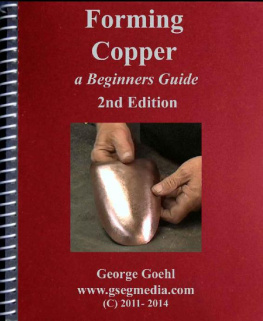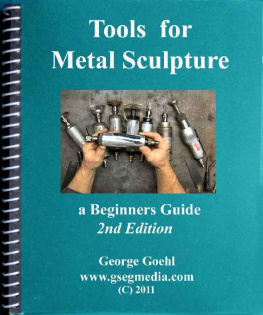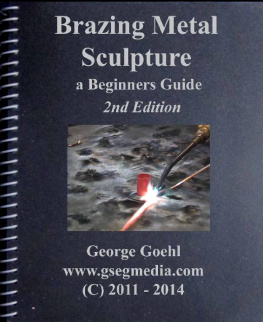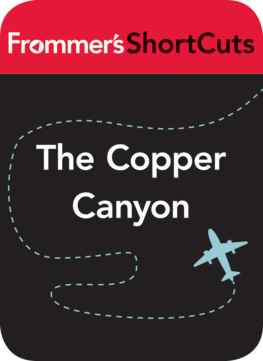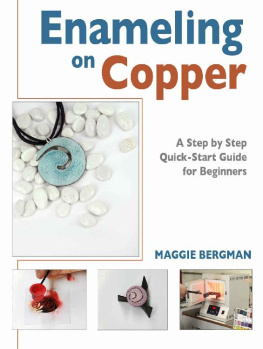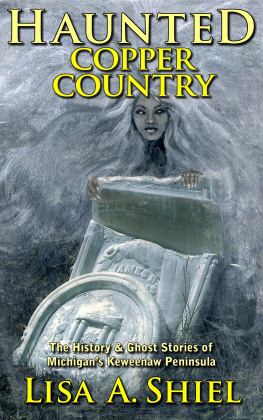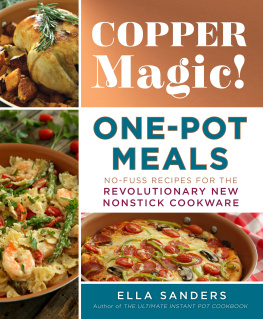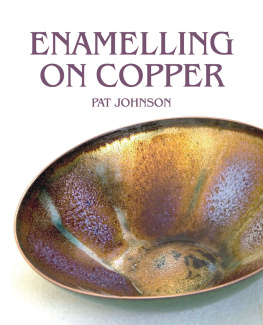Forming Copper: A Beginners Guide
2nd Edition

George Goehl
Copyrighted 2011- 2014
Published by GSEG Media
http://www.gsegmedia.com
ISBN: 978-1-4507-7460-4
Introduction to 2nd Edition
Within the book are links to applicable YouTube videos. The videos provide hands on demonstrations relevant to specific topics.
When I first started producing instructional videos back in 2003 my thought was on people who wanted to do metal sculpture. This made sense as metal sculpture is how I have made my living for almost 40 years.
What I have come to realize is that the videos and books have attracted a far larger audience. In this edition I have included techniques that can be used no matter what your end goals.
I am not a Copper-Smith; meaning someone that works day in and day out with copper. For me, working with copper is a means to an end; enabling me to include copper into other work.
This book is a beginners guide. It is not an instructional book for copper-smithing.
This book is intended to get you started. It illustrates tools and techniques that can be used to turn basic copper sheet, copper wire & copper tubing into the form that you desire.
I have plans for a number of new YouTube videos, some of which will be copper related. To keep in touch and keep up to date with New Information I'd suggest subscribing to my YouTube Channel: http://www.youtube.com/897473 This way you will be notified when a new video is posted.
Table of Contents
What is copper?

Most metals are an alloy. An alloy is a base metal combined with one or more other elements. Steel for example is an alloy containing iron and carbon. Bronze is an alloy made up of copper and tin.
Copper is not an alloy. It is often listed as 99% pure. The other 1% is made up of trace elements or impurities.
For the work that I do I use copper wire, copper tubing and sheet copper.
The advantages of copper:
1) Malleable easy to form.
2) Readily available.
3) Comes in a variety of shapes and sizes.
4) Contrasts well with brazed joints.
5) Numerous ways to finish copper.
Note : Price of Copper : C opper is a commodity just like corn, soybeans and crude oil. The price for copper goes up and down related to supply and demand.
Historically the price of copper on the Commoditys Market has been quite volatile.
Copper is primarily used in the building trades and industry.
When you read about increased new home construction and increased industrial production you know that the price of copper is going to go up.
As an example of how prices on copper change, there have been times when I have sold my scrap copper for more than I paid for the original copper.
The sheet copper that I use is termed 16 oz. copper. This means that it weighs 16 oz. per square foot. I also use 20 oz. copper which is a bit heavier, but mostly I stick to the 16 oz.
About the time you know about 16 oz. copper you'll contact a metals warehouse and they'll tell you that they don't list metals by ounces, only in gauges or in thousands.
Depending on where you buy copper it will be listed differently.
16 oz. copper - 25 gauge* - .0216 thousands
20 oz. copper - 21 gauge* - .0270 thousands
* Suppliers differ on the gauge of copper although when listed in weight per square foot and thousands they generally are in agreement.
The 16 oz. term comes from people using copper in the roofing trade for copper roofs, eaves and gutters. I've bought some at roofing companies and have generally found their prices to be reasonable.
Where I Buy Copper :
Metal Recyclers : Scrap Copper
To find a metal recycler in your area, search Google scrap metal & your Zip code.
In my case the search for scrap metal is "scrap metal 47448"
Or you might try the Yellow Pages..
I use 8 gauge copper wire for the Magic Wands which I buy from a metal recycler.


As you can see from the above photos this is a mishmash of scrap copper. On this day I was looking for 8 gauge copper wire that is in cables.

I pay scrap copper prices for this wire. Even though this is considered scrap, the copper wire is new. The copper cables are left over from commercial electrical jobs.
I unwind the cable and make circles by wrapping the copper wire around different diameters of pipe.

If you check at your local hardware or builders supply you can find short sections of pipe that you can use for wrapping circles.



Ending up with a Magic Wand
Small Quantity Buying of Copper Sheet.
Just checked and Amazon.com has some decent prices on sheet copper. Go to Amazon.com and search for sheet copper. This is a good source if you want to buy in smaller quantities.
For larger quantities you may want to go to a metal warehouse.
Buying Copper at a Metal Warehouse

Metal Suppliers have or can get just about any dimension of copper you may want. My purchases of copper from metal warehouses is primarily sheet copper.
Buying drops from a non-ferrous warehouse or metal distributor: Non-ferrous metals are metals that contain no iron, such as copper, brass, bronze and aluminum. In other words, this type of supplier only sells non-ferrous metals.
The warehouses are distributers of metal to large manufacturing companies which are ordering in the thousands of pounds.
I have bought from a warehouse that has an area where they store the drops.
An example of a drop: A company orders 200 feet of 25 gauge copper sheet 19 inches wide. The warehouse runs a 24 wide coil of copper through a slitter. The results is a 200 coil of 19 copper and a 200 coil of 5 copper. For me the 5 coil is perfect for copper maple leaves, laurel leaves and butterflies.
The warehouse probably charges the customer for the entire 24 coil and the 5 left over is considered a drop. I can buy the 5 x 200 drop for little more than scrap price.
Another example: I once bought some 24x48 sheets of 25 gauge copper at a much reduced price. This copper was intended for a casket company. The sheets had a plastic protective sheet on both sides of the copper to inhibit oxidizing or scratching. There were some bubbles in the plastic protective sheets and the casket company refused the shipment.
Next page
